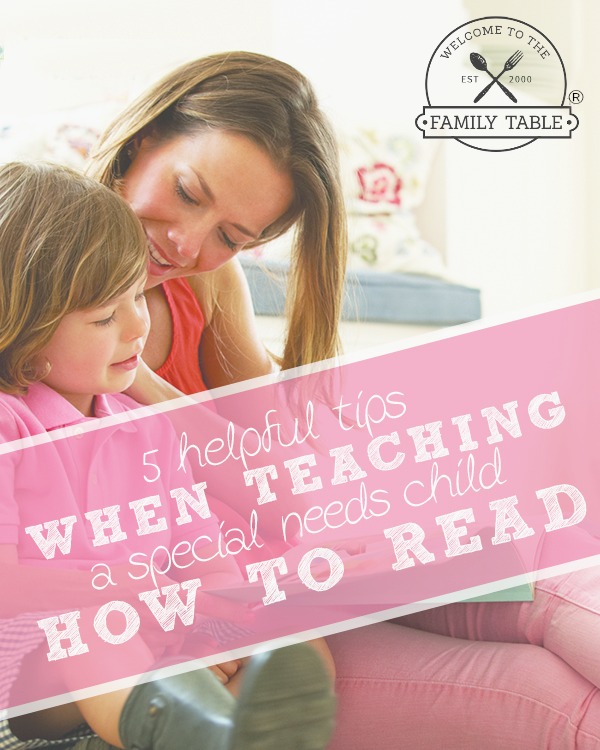5 Helpful Tips When Teaching a Special Needs Child to Read

5 Helpful Tips When Teaching a Special Needs Child to Read
Teaching a child to read can be a difficult task. You may find yourself concerned with making sure that the strategies that you use help set the groundwork for future literacy success. When teaching a child with unique learning needs, those anxieties may grow as you use different tools and methods that will be meaningful for that child. Here are some helpful tips to think about when teaching a special needs child to read.
1. You must be Patient
Teaching, itself, requires a great deal of patience as children of varying abilities grasp concepts at different times. This is also the case with children with special needs. While their same aged peers may be developing skills at different rates, a child with different needs may not adhere to the same time line. Depending upon the nature of their disabilities, some students may be delayed in their cognitive development and not capable of learning new reading skills being taught to their peers. Try to teach reading skills typical of the child’s age, but be patient if the child just isn’t ready to learn them.
2. Don’t Let Yourself Compare
This one is easier said than done. Work at making sure that you appreciate the child with whom you’re working for the amazing little person that they are. Highlight their successes and measure their growth. Try to stay away from comparing them to their same age peers or other siblings. Children with different learning needs may not be as advanced as their peers, but they certainly deserve to be celebrated for the strides that they are taking in their learning.
3. Start with the Basics
Just as you would with any new reader, begin with basic phonemic awareness. Teaching (and drilling) the letter sounds and the sounds that blends make will lead to word identification later on down the road. Work on letter sounds until the child has mastered most of them. Then begin putting them together to build words.
Another step to teaching reading is to do lots of reading aloud. Find books that the child enjoys and read them over and over until the child can “read” it on his own. (This is actually recalling the story from memory.) Getting a child into the habit of reading will keep his curiosity going so that it’s easier to work through challenges that are sure to come up as he learns to read.
When selecting reading material to share, try to select materials that are of high-interest to the child. If he likes trains, for instance, select a combination of fiction and nonfiction all about trains. Using a child’s interests in selecting literature will help keep them excited about learning to read.
4. Practice Writing Together
Most children, if given the opportunity, love to practice writing. Early on, writing might look like scribbling…then it becomes a series of letters strung together…finally words begin to take shape. As children, special needs or average functioning, learn to read, developing their interest in writing will help them to further explore literacy and draw the connections among their thoughts, spoken words and written text. These concepts are imperative to further development as a reader.
If you find that the child with whom you are working is struggling with the motor skills necessary for writing, you may want to consider opportunities to convey thoughts through pictures or other artistic forms or assistive technology designed for a variety of learning needs.
5. Call Attention to Strengths
As children with unique learning needs go through their education, they may become aware of discrepancies between them and their peers. Helping the child to see the areas in which he excels and celebrating those areas will help him to see that, though there may be some areas where he needs help sometimes, there are others in which he is strong. Helping the child to develop a strong sense of self will help him to be more confident in each new skill that he works to develop.
While there are many strategies that will be unique to each child, the tips above will certainly lay the foundation when teaching a special needs child to read. Just like teaching anyone, it require great patience and really keying into the individual when developing a solid approach. Don’t be afraid to experiment as the child shows you more about themselves and how they learn best.
More to consider…



Excellent site you have here.. It’s difficult to find good quality writing like yours these days.
I seriously appreciate people like you! Take care!!